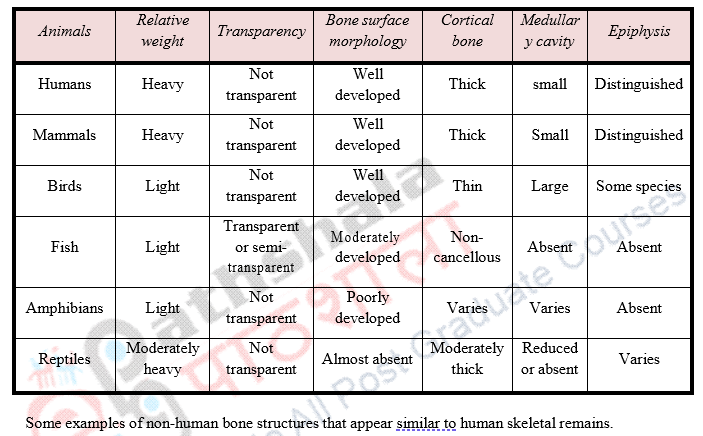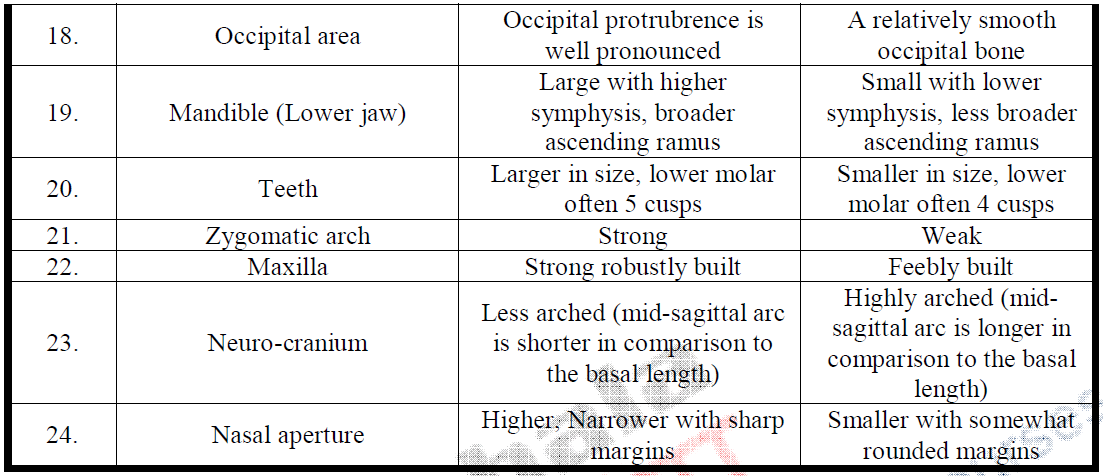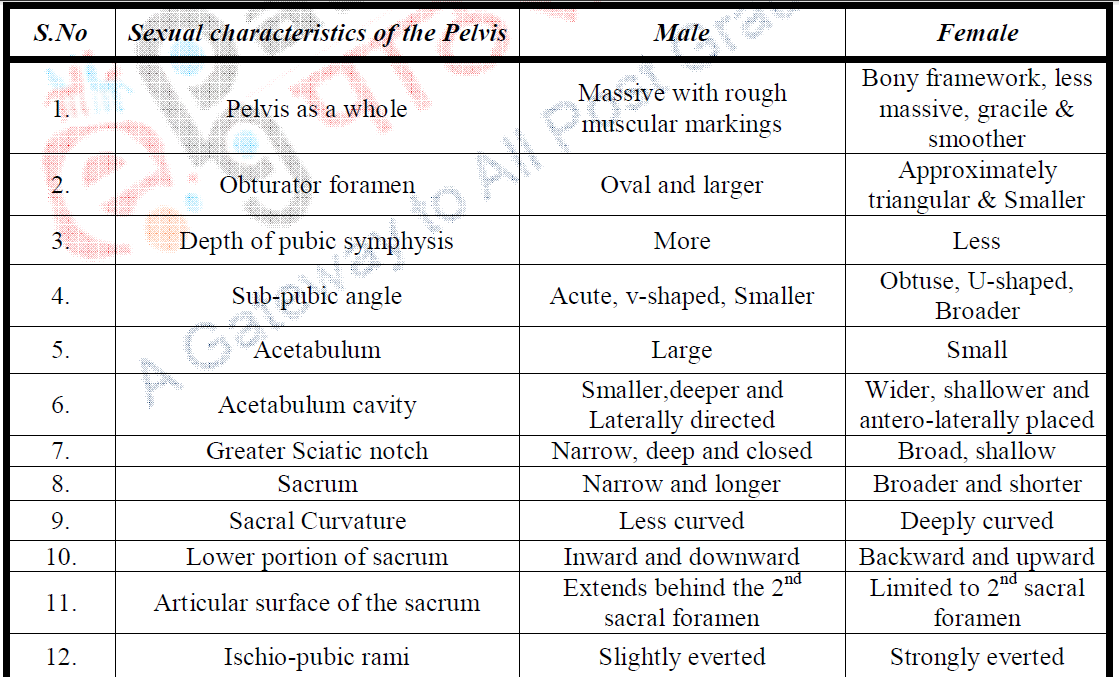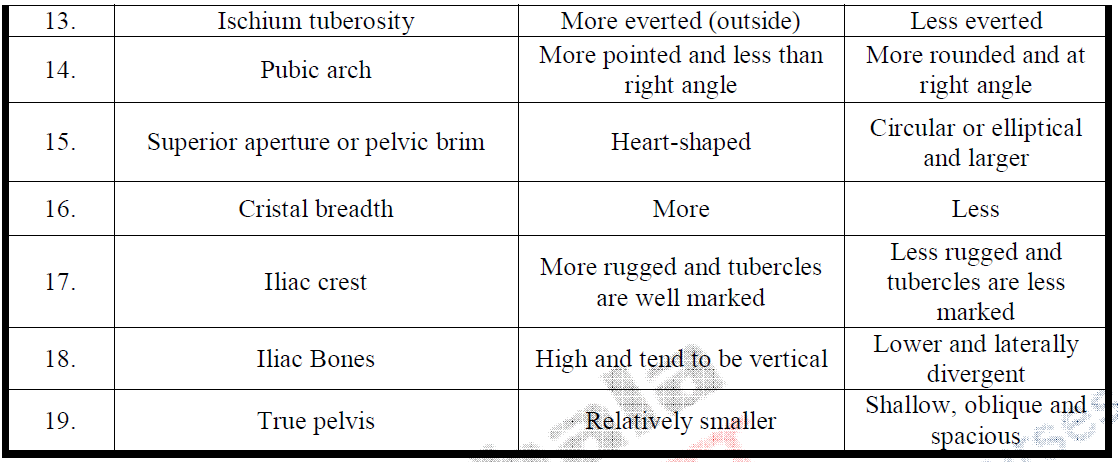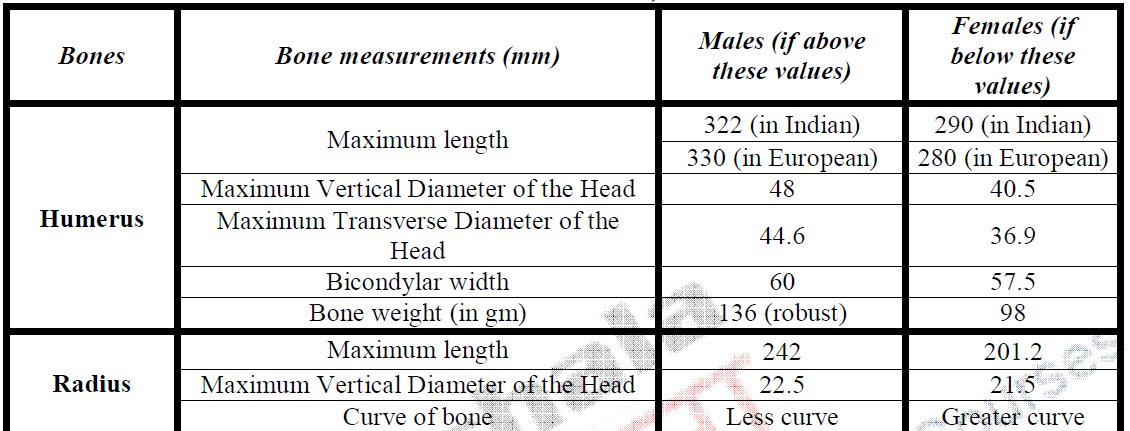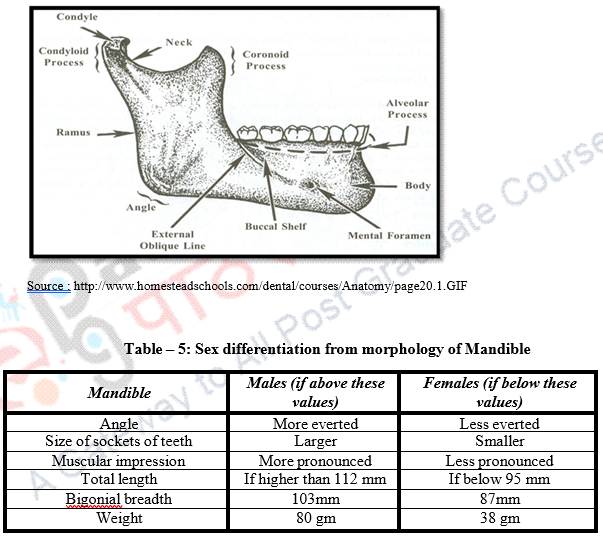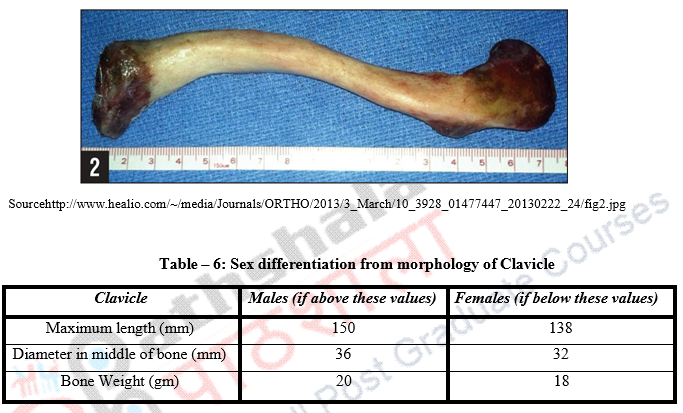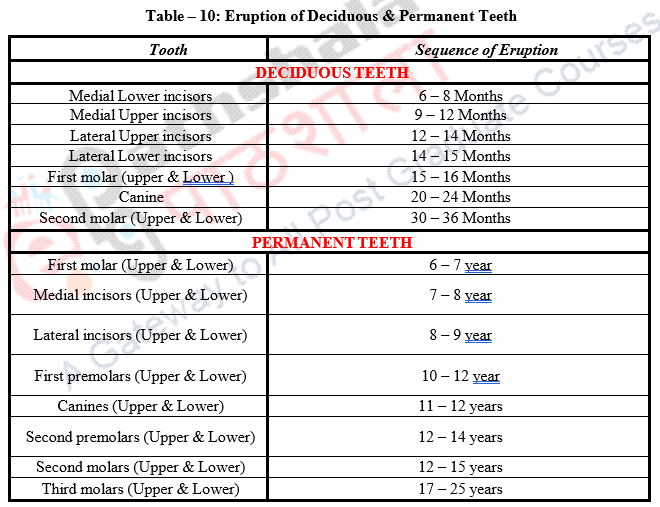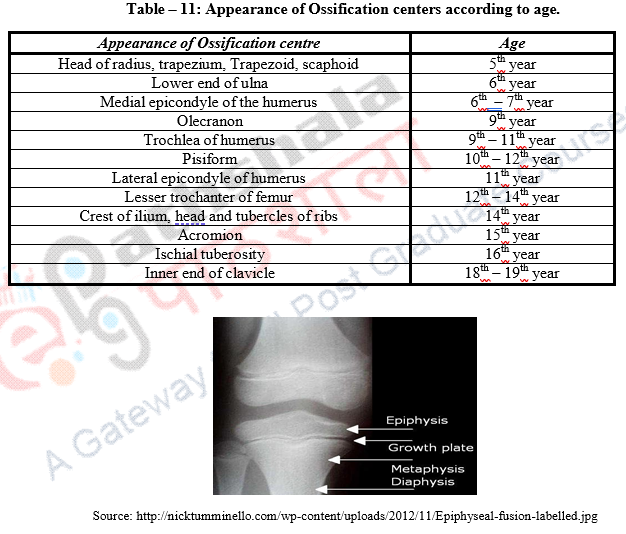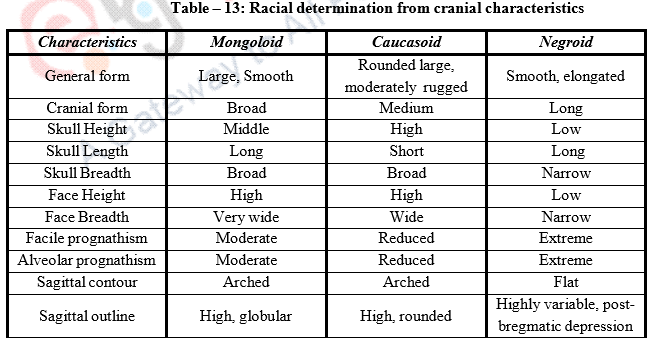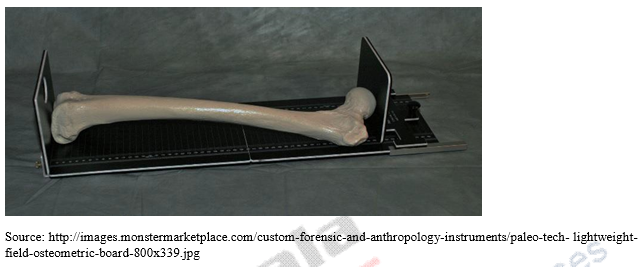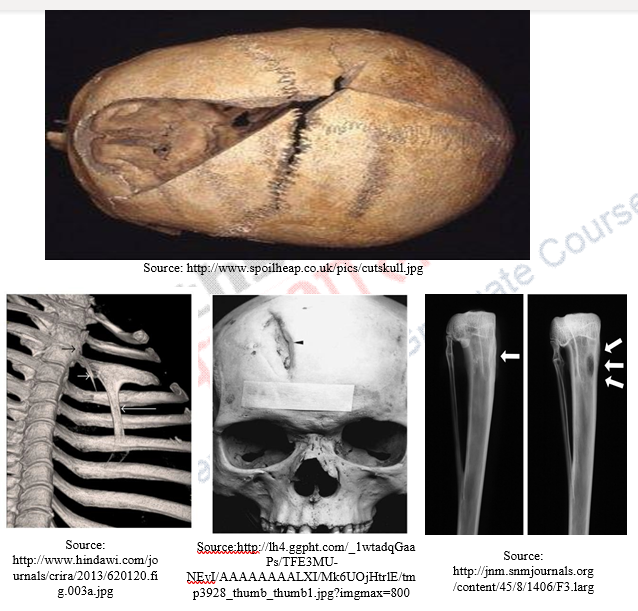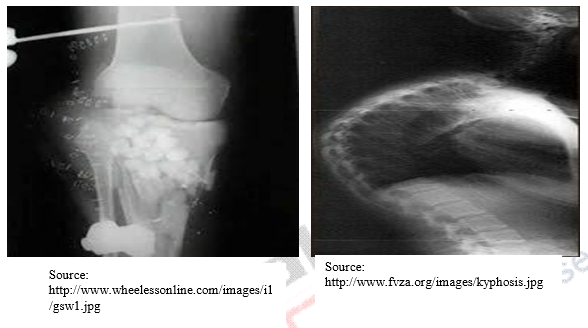8 Establishment of Identity through Skeletal Remains
1. Introduction
Establishment of identity through skeletal remains is the foremost role of the forensic anthropologists. Forensic anthropology, deals with human skeletal remains to determine identity by utilizing characteristics of bone structures so as to present it in criminal proceedings or in a court of law. Thus, it is the application of science of physical anthropology to the legal process.
Charles snow in 1973 defined Forensic anthropology as –
“Forensic anthropology is the application of physical anthropologists’ specialized knowledge to human, sexual, racial, age and individual’s unusual variation to the problem of medico-legal jury prudence”.
Definition given by Thomas Stewart in 1979-
“Forensic anthropology is that branch of physical anthropology which for forensic purpose deal with the identification of more or less skeletonized remains known to be or suspected of being human, beyond the elimination of non-human element”.
Definition given by Douglas H. Ubelaker in 1996-
“Forensic anthropology is the application of the science of physical anthropology to the legal process for the identification of skeletonized remains and related legal structure”.
Identification of skeletonized human remains is an important aspect as it can prove whether any offence was committed or who was the culprit of the crime or origin of the species, probable age, sex, stature of the individual. Many crime cases such as killing and throwing for disposal of dead, dowry death cases by burning, mutilated and fragmental skeletons in homicide and accidental cases, Plane crashes, suicidal cases, explosions, fire cases and buried bodies in various crime cases require skeletal identification. For skeletal identification mainly sexing, ageing, stature estimation for comparison has been done.
2. What can be identified from the skeletal remains?
From skeletal remains the forensic anthropologist will likely be able to answer the following question, and these questions describe specific biological characteristics of skeletal remains of the deceased which ultimately lead to the identification of the deceased person.
Thus forensic investigation for identification of skeletal remains proceeds by answering the series of these key questions:
- Are the remains constitute bones?
- Whether the bones are human or non-human?
- Whether they belong to one or more individuals?
- What is the sex of the individual?
- What is the approximate age of the individual?
- What is the ethnicity of the individual?
- What is the stature of the individual in living state?
- What is the cause of death?
- What is the time of death?
- Is there any skeletal injury?
- Other distinguishing characteristics in the skeletal remains that may lead to personal identification.
3. Are the remains bone?
Forensic anthropologists first try to determine whether the excavated remains are bone or not. Sometimes, bones have been confused with materials such as pieces of tree roots, plastics, some type of foam insulation, turtle shell, rocks or any other materials which appear in shapes that mimic human bones. Also bones are rarely consumed by fire though fire exposure changes the colour and texture ofthe bone and make the bone brittle and deformed which may make visual detection difficult. One rule suggests that bones are usually lighter than rocks and irregular bones such as patella, carpals or tarsals tend to have higher concentration of trabecular or cancellous bone, making them significantly lighter than rocks.
An experienced forensic anthropologist will have no problem distinguishing non-osseous material from bone. Thus only someone experienced in bone identification will be able to distinguish bone from other materials. So, it is crucial to determine at a very early stage of investigation that whether the materials are bone or not. After it is confirmed, that the excavated materials are bone, forensic anthropologist proceed for further questions to find the identity of the owner of the bone.
4. Whether the bones are human or non-human?
Forensic anthropologists try to determine whether the bones recovered are human or non-human. Thus basic knowledge of human skeleton as well as non human skeleton can help determine the forensic significance of the recovered skeletal remains.
Large mammal bones such as deer, bear, large dogs and pigs are most often confused with adult human bones and small animals may be confused with juvenile or fetal bones. In particular when bones are highly weathered, eroded and fragmented, identification of the skeletal remains whether human or non human becomes a crucial phenomenon as human and non human mammals possess many similar skeletal characteristics.
Upon gross examination, it is known that there are two main characteristics of bones that can help distinguish between human and non human, i.e. Maturity and Morphology.
· Maturity aids in differentiating small non human animals that even after reaching adulthood, have bones that are similar in size when compared with juvenile humans.
– Juvenile human long bones may have un-fused separate epiphyses or may not possess any at all. Conversely, those of a small adult nonhuman animal will display fused epiphysis. As a result non human bones can be easily differentiated from juvenile humans by examining the level of bone maturity.
– Other morphological indicators that can be useful from differentiating small animals from human juveniles are the peculiar characteristics of long bon Juvenile long bones have roughened distal and proximal ends where epiphysis will eventually fuse to metaphysis. Non human skeleton shows features such as fusion of fibula and tibia, curvature of the long bone shaft (diaphysis). For example, the long bone shaft of small mammals may be noticeably curved but it is straight in healthy human juveniles.
– Pelvis of the small mammals is one of the structure that could possibly be misidentified as human but it is possible to make distinction between the two. It will be a non human pelvis, if it is fused into one unit, because a human juvenile pelvis of comparable size will be in multiple pieces and also the two adult pelvic bones of the human do not fuse at all unless there is a pathological condition.
· Morphology or the shape of the bone is the second characteristics of bone that aids in the distinction between human and nonhuman skeletal remains.
– As human and non human share similar types of bones, for example, two femora, two humeri, two scapula and also similar basic architecture required by our soft tissue, it poses difficulty in identification. But due to bipedal locomotion of humans, they have distinct morphological features related to erect walking thus distinguishing them from all quadrupeds having four legged locomotion. Skull has become globular instead of elongated as in animals. Nasal bones are reduced in length and the maxillary and mandibular arches become parabolic instead of V-shaped in animals. Human beings possess true forehead with orbits directed forwardly and foramen magnum present at the base of the skull. In animals, skull bones have nuchal crests whereas supra-orbital ridges and nuchal lines are present in human skull. In animals mandibular angle is comparatively obtuse, whereas, it is acute in human beings. Coccygeal vertebrae are present only in reduced form as there in no tail in human beings. Linea – aspra is present in humans on the back side of the femur bones which is not present in animals.
– Dissimilarity in the shape of long bones and other bones of the body proves helpful in comparing humans and nonhumans.
- Scapula: being very distinct and reduced in size, quickly leads to the positive identification of human or non-human remains.
- Fibula: reduced in size in number of small animals and is fused to shaft of the tibia whereas in humans fibula does not normally fuse to the tibia unless there is pathology such as ossification of ligaments that serve to keep both bones articulated together.
- Radius & Ulna: Some larger mammals such as pig, sheep, and deer have a curved and fused radius and ulna. This characteristic immediately excludes humans as both the radius and ulna in humans have straight diaphysis, and remain un-fused throughout life.
- Toes: Hoofed mammals that have an even number of toes on each foot – two or four belonging to the order artiodactyls can be easily distinguished from humans by the presence of metapodials. Metapodial is a generic name given to a fused structure formed by the fusion of third and fourth metacarpals and metatarsals early in development e.g. in deer, sheep, goat, and moose. In certain species metapodials are long and therefore could be easily mistaken as long bones. But it can be easily recognized by a number of morphological indicators as the shaft are long, thin and straight, and they still retain a clear groove down the shaft where they have fused; the proximal articulation is flat; and the distal articulation is unique with double rounded articulation. Also metacarpals and metatarsals can be distinguished from one another in terms of cross-sectional shape of their shaft, as, metacarpals are D-shaped whereas metatarsals are square- shaped in cross-section.
- Cranium: Humans have a large, rounded braincase with flat or orthognathic face in profile, making it very distinct from any other mammal, that misdiagnosis is unlikely.
Table – 1: Comparison between human and non human animals on the basis of structural and morphological skeletal differences.
Some examples of non-human bone structures that appear similar to human skeletal remains.
1. Bear paw
Disarticulated bear paw after decomposition of soft tissue are commonly confused with human hands.
2. Pig teeth
Pig molar teeth shows striking similarity to human molars as both are omnivorous and their teeth are designed for generalized diet.
3. Turtle shell
The underlying shell of the turtle resembles the top of a human skull.
5. Whether the bones belong to one or more individual?
Forensic anthropologists analyze the excavated skeletal remains and determine whether the bones belong to one individual or the bones are coming from a number of individuals. This occasionally enables the forensic anthropologists to determine the number of individuals present.
Humans have a definite number of bones with one skull, pairs of arm bones, pairs of leg bones, 12 pair of ribs, 24 vertebrae, one sacrum which is made up of 5 fused vertebrae, a coccyx, and one pelvis. If the forensic anthropologists come up with an extra set of any of these bones, it is self explanatory that the bones belong to two different individuals. However, it becomes difficult to ascertain the same if the bones are fragmented. Only an expert will be able to determine that the three fragments of a particular bone say humerus came from three different humerus.
6. What isthe sexoftheindividual?Determining the sex of the unknown skeleton material depends upon relative completeness of the skeleton. In a complete skeleton of a sub-adult the sex determination may be a little better than a guess i.e. around 50 percent (Brues, 1958) as sex can be determined more accurately after attainment of puberty. Sexual differences are well marked in adult human skeleton, therefore, 100 percent accuracy can be achieved if the skeleton is complete. Physical anthropologists use several elements of the skeleton to differentiate between sex of the individual. According to Krogman (1962) Pelvis of the human skeleton can be used to determine sex of unknown cases upto an accuracy of around 95 percent. Likewise skull can determine sex with an accuracy of 90 percent. The extent of accuracy can be enhanced further upto 98 percent by considering pelvis in combination with skull. Long bones can also determine sex with 72-80 percent accuracy. If long bones & skull are considered together accuracy can be enhanced upto 90-95 percent. Likewise if long bones and pelvis are considered together, sex can be determined with an accuracy of 95 percent. These estimates are based on morphometric and morphological observations which, in a skeleton, may differ depending upon the population involved.
As a general rule, standard should be used for reference to the population group from which they are drawn and upon which they are based as they are ordinarily not interchangeable.
6.1 Determination of sex from skull
Table – 2: Sex Determination from Skull morphology
- Giles and Elliot (1962) diagnosed the sex of the skull by means of the following formula :
1.16 (Cranial length) + 1.66 (Basion – Nasion length) + 1.0 (Basion – Prosthion length) + 3.98 (Facial Breadth) + 1.94 (Upper facial height)
If this sum is below 891.12 then we are dealing with a female in 4/5 th of all the cases whereas above this figure we are dealing with a male, whatever be the race.
6.2 Determination of sex from pelvis
Table – 3: Sex Determination from Pelvic Morphology
6.3 Determination of sex from long bones
Generally male limbs are longer, massive and robust than females excepting a few cases where females are as robust and tall as males. Various human races differ but males over pass the females in the length of the bone in most of the cases. Measurements and statistical analysis of the long bones are primarily done for identification of sex.
Table – 4: Sex Determination from Long Bone Measurements & Morphology (values in mm.)
6.4 Determination of sex from other skeletal remains
- Determination of sex from Mandible:
Mandible can be used to determine the probable sex of the deceased individual. Mandible is larger and thicker in males with a broader ascending ramus and the angle formed by the body and ramus is less obtuse.
· Determination of sex from Clavicle:
- Determination of sex from scapula:
Length from superior to inferior angle is larger in males and in males thick spine is present.
6.5 Determination of sex from indices
- Cranio – Femoral index: It is the relationship of the weight of the two femurs to the weight of the skull. In males, the mean index is greater than 1 whereas in females, it is less than 1.
- Cranio- Mandibular index: It is the relationship of the mandibular weight including the teeth to the weight of the skull. It expresses the relative development of the masticatory apparatus and hence can determine sexual differences. In male, the cranio-mandibular index is equal to or greater than 14.4 whereas it is 13.3 or lesser in case of females.
- Ischio-pubic index: It is the relationship of pubic length (mm) to ischial length(mm). If it is in the range of 73 – 94 then it is male and if it lies in the range 91 – 115 it is female.
- Sciatic notch index: It is the relationship of width of sciatic notch to the depth of sciatic notch. Male if it comes out around 4 – 5 whereas female if it is between range 5 – 6.
Note: Determination of sex can only be said with 100 percent accuracy if we combine many criteria together to derive the conclusion.
7 What is the approximate age of the individual?
Forensic anthropologist attempt to determine the most approximate age of the recovered skeletal remains and will provide age in range such as 15 – 17 years as there is no such accurate skeletal clues that allows determination of specific age. And this age range will be narrower if the individual is young whereas wider if old. The reason for this is during old age regular changes are less common and degenerative changes occur. Immature specimen will be thin and light whereas well formed occipital protuberance, mastoid process and supraorbital ridges suggest an adult individual. In old age i.e. Skull of more than 85 years, all the sutures are fused and the bone become very thin, pororous & brittle.
7.3 Determination of age from cranial sutures
The Sutures of the skull follow a definite sequence & time of closing by which approximate age of the individual can be determined.
7.4 Determination of age from dentition
Teeth eruption and calcification shows definite sequence & time, both in deciduous and permanent dentition. Their prediction from the recovered skeleton can provide approximation of age of the deceased individual.
7.5 Determination of age from epiphyseal union of long bones
It has been established that ossification or the union of epiphysis with the respective shaft is the main guide for age. But this does not yield much evidence beyond 20 years as after attaining maturity, the rate of developmental changes slows down. Epiphyses are growth centers separated from the shaft by a growth plate made up of cartilage. These epiphyses fuse to the shaft of bone at specific ages and thus can provide an estimation of age.
8 What is the ethnicity or race of the individual?
Determination of skeletal race or ancestry is difficult as skeleton does not contain any obvious racial characteristics and also due to intermixture or exogamy there is no pure ethnic group. Broadly three main races which, may be differentiated using the shape and relative size of the skull & facial bones are Mongoloid, Caucasoid & Negroid.
However, expert forensic anthropologist knows the limitation dealing with racial characteristics. This can only define the possibilities that the given skeleton may be having Caucasoid or Mongoloid or Negroid ancestry and that can be used to narrow down the investigation regarding identification of skeletal remains.
9 What is the stature of the individual?
Stature estimation occupies relatively central place both in identification and anthropological research, necessitated by the medico-legal experts. Stature estimation is one of the important parameter to identify individuals and is most widely used in forensic examination along with age, sex and ethnicity when dismembered remains are involved. Estimation of stature from different parameters of body is also carried out to establish partial identity of individuals which can help in narrowing down the pool of possible victim matches. Due to non availability of complete skeleton at crime scene in most of the cases, forensic experts are forced to use mathematical models or formulae as compared to anatomical methods to derive stature as it is workable even with a single long bone.
Reconstruction of stature from Bone fragment:
The practical method employed nowadays for estimating stature uses measurements of long bones (Arm Bones – Humerus, Radius, Ulna, and Leg Bones – Femur, Tibia and Fibula) as there is an established linear relationship between the length of these bones and the overall stature of the individual. The more number of long bone measurements obtained from the individual, the more accurately the stature will be estimated.
Muller (1935) provided a method for reconstruction of stature from fragmentary remains of long bones. This is done primarily by measuring the long bones and then comparing the measurements with the chart based regression equation or through the use of multiplication factor. (Stature = Maximum length of the long bone x Multiplication factor).
Nowadays regression equations are employed to estimate the stature of unknown skeleton remains as suggested by Trotter and Glesser (1952). Various parameters are used to predict stature as many times long bones are broken or severely traumatized. Thus scientists have successfully estimated stature from hand length, foot length, length of sternum, length of phalanges etc. Also Hand outlines have been used to predict stature which is a new perspective in forensic examination (Dey & Kapoor, 2015)
10 At what time the death of individual occur?
Determination of time of death of the recovered skeletal remains is almost always difficult but certain categories of information can provide a scientific validity and acceptance. This determination becomes more inaccurate as the time since death increases. Time since death of skeletonized remains involves those variables that affect the rate of decomposition.
- Larger bodies take longer time to decompose as compared to smaller bodies.
- Mutilated or fragmentary bodies decompose earlier than the intact body as insects attack increases the rate of decomposition whereas intact bodies has skin surface which protects the body from organisms attack. It is only after the decomposition of the skin surface the organisms grow and decomposition begins.
- A nude body decomposes earlier than a clothed body. However, if the body was wrapped within the plastic, decomposition process becomes very slow.
- The color and appearance of recovered bones may be used as indicators for the amount of time that has passed since death.
- Season of year when the body was buried affects decomposition.
- Temperature and Humidity affect decomposition
- Clouds, precipitation, pH of soil, where skeletal remains are buried have been recorded by the forensic anthropologists for the purpose of prediction of time.
- Plant growth around the skeleton gives information as plants grow through definite cycle and that cycle length can indicate that how long that body has been there.
- Life cycle of each of the common insects present in the area.
The accumulation of all scientific data helps to narrow the determination of time since death but within a limited range as time since death of specially skeletonized remains is a very difficult task and forensic investigators can only give range of time.
11 Is there any skeletal injury or any individual characteristic?
The skeleton remains can provide individual traits that can help in determining identity of the recovered individual. Certain kind of pathological changes or illness that occur during life leave impression on the bone and those impressions give clues for identification, such as arthritis (alters the appearance of joints), many congenital anomalies such as fused vertebra, scoliosis (lateral curvature of spine), extra ribs arising from cervical vertebra or bifurcated ribs, kyphosis, spondylitis, osteomyelitis (bacterial infections), bone spurs, malignant tumors. Metabolic disease such as gout & rickets, scurvy, bone infections or fractures, tuberculosis which cause bony deformities can individualize the bone and thus identification can be done. Also skeletal injury gives clues regarding the cause of death. A gun- shot to the head leave the bullet impression with an opening in the skull as evidence which confirms that the person was shot dead. Stab wounds on the ribs, healing of severely fractured bone due to any accident or death due to animal attack are identified by carefully observing cut-marks. If the recovered skeleton remains have significant bony abnormalities, forensic anthropologists are able to make positive and accurate identification of the individual.
12 Summary
Forensic examinations of skeletons for establishing identity, requires morphological, osteological and anatomical knowledge of the bones that could provide valuable scientific evidence. Skeletal remains provide information about the individual identification or to whom the remains belong. This is performed by determining the age, sex, race, and stature of the individual. Also skeleton can provide clues to individualize the bone which again aids in identification. Now due to invention of DNA profiling the identification can be established beyond any doubt, but there can be cases where the tissue extraction for DNA analysis cannot be done as they are either totally burned or putrefied or the extracted DNA was highly degraded that may not give confirming results to establish identity.
| you can view video on Establishment of identity through skeletal remain |




